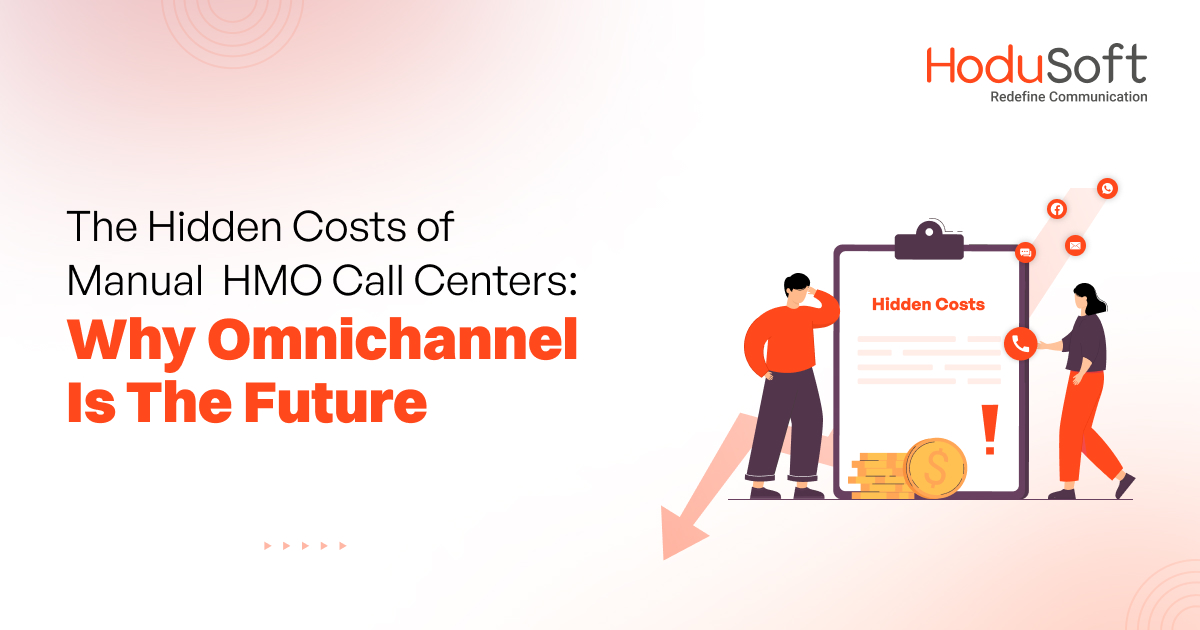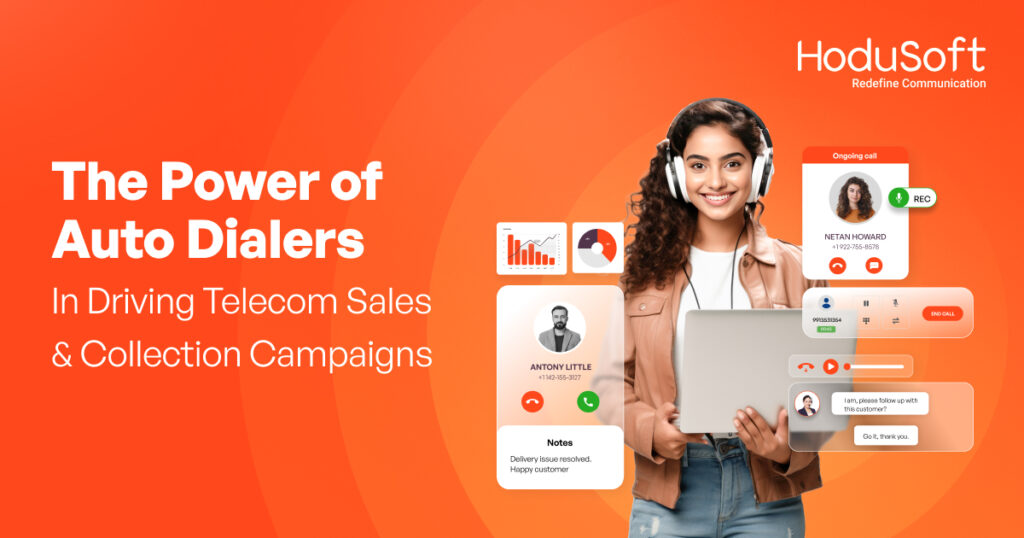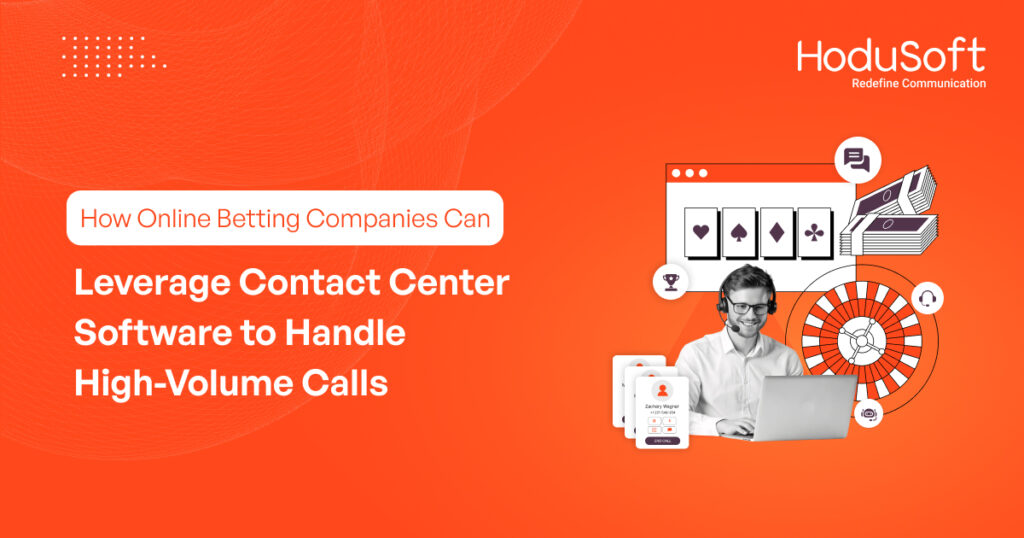The Hidden Costs of Manual HMO Call Centers: Why Omnichannel is the Future
HMO contact centers are organizations or dedicated departments that handle queries and issues related to Health Maintenance Organizations (HMOs). This type of contact center usually provides support for appointment scheduling, medical advice, and appropriate medical services.
HMO contact centers also play a critical role in managing patient information. Some decades back, health maintenance organizations used manual processes to run their call centers. However, manual HMO call centers are highly inefficient and labor-intensive.
A cloud contact center is a modern solution to these inefficiencies, offering essential features such as IVR, call recording, and omnichannel capabilities. It enables businesses to manage customer interactions efficiently across various communication channels, providing scalability and reliability, particularly for large enterprises.
As agents in HMOs, contact centers answer patient queries, schedule appointments, provide medical advice, and refer patients to the appropriate medical services; they need sophisticated contact center software solutions to streamline the processes and provide high-quality customer service and customer experience.
This blog post details the challenges faced by HMOs that use manual HMO call centers, the various expenses and costs associated with manual HMO contact centers, the benefits of omnichannel contact centers in HMOs, and how to handpick the right omnichannel HMO contact center solution.
- Challenges Faced by HMOs that Use Manual HMO Call Centers
- Some Latest Statistics on Healthcare Customer Service
- Costs Associated with Manual HMO Contact Centers
- What is an Omnichannel Contact Center?
- Benefits of Omnichannel Contact Centers in HMOs
- How to Handpick the Right Omnichannel Contact Center Software
Challenges Faced by HMOs that Use Manual HMO Call Centers
Healthcare Maintenance Organizations that use manual HMO call centers face a wide range of challenges such as:
1. Efficiency Issues
Manual HMO call centers slow response times and increase workload for staff.
2. Data Management
Manual HMO call centers handle patient information manually. It not only increases the risk of errors but also data inconsistencies.
3. Data Security
HMO call centers handle sensitive patient information. That makes data security and privacy a major concern.
4. Scalability
As call volumes grow, manual HMO call centers cannot keep up with the incoming calls. A modern solution is a cloud-based contact center, offering scalability and flexibility to handle increasing demands.
5. Patient Satisfaction
Manual HMO call centers struggle to ensure patient satisfaction. When patients wait for long, they are more likely to be frustrated and irritated. Understanding and catering to your customers’ preferred communication channels can significantly enhance their experience and reduce frustration.
6. Cost
Manual HMO call centers require more staff and resources. That leads to higher operational costs compared to automated HMO contact centers.
7. Compliance
Ensuring adherence to regulations and standards can be more challenging with manual call centers.
8. Quality Assurance
Would it surprise you if we say manual HMO call centers find it difficult to maintain consistent service quality? Of course, not.
Some Latest Statistics on Healthcare Customer Service
When it comes to the healthcare sector’s customer service, many recent studies, polls, and statistics indicate there is a lot of room for improvement. Let’s take a look at some latest data and statistics.
1. Abandonment Rates
A recent survey reported average abandonment rates between five percent and eight percent, with the benchmark for healthcare being at nearly seven percent.
2. First Contact Resolution Rate
The healthcare industry benchmark for first contact resolution (FCR) rate in healthcare is 71 percent. As per another survey, only 52 percent of patients have their issues or queries resolved in the very first call.
3. Average Handling Time
The average handling time for any call center is six minutes and 10 seconds. In healthcare, the benchmark for handling time, not including wrap-up, is three minutes and 22 seconds.
4. Call Center ROI
As per a recent study, two-thirds of healthcare call center leaders find it difficult to prove call center ROI internally, and almost three-fourths of them feel pressured by their system’s executives to demonstrate that their call center could ever become a profit generator rather than a cost center.
5. Inefficiencies in Healthcare Call Center
As per a study, two out of every five healthcare call center leaders point to staff burnout and turnover as the main drivers of inefficiencies in their call centers. But on average, they spend just 0.6 percent of their budget on technology to prevent them. However, 43 percent of their budget is sunk into labor costs.
6. Patients’ Satisfaction
As per a recent survey, only 51 percent of US patients are satisfied with their healthcare provider’s call center service.
7. On-Hold Time
As per the same study, the average on-hold time is 4.4 minutes.
Average Handle Time: A Comprehensive Guide
Costs Associated with Manual HMO Contact Centers
As discussed in the above point, manual HMO contact centers are not only inefficient but are extremely costly compared to their automated counterparts. Here are some costs that are associated with manual HMO contact centers.
1. Direct Costs
One of the major costs associated with manual HMO call centers is the direct costs for hiring and training new employees as well as expenses associated with overtime, turnover, and training.
2. Indirect Costs
After direct costs, indirect costs account for a huge chunk of costs. Those are the administrative costs, facility costs, maintenance costs, employee benefits, insurance, and more.
3. Hidden Opportunity Costs
When HMOs opt for manual call centers, they have to bear an enormous opportunity cost. Missed opportunities for proactive, personalized customer service can burn a massive hole in their pockets.
4. Compliance and Error Costs
Manual HMO call centers increase the risk of errors and non-compliance by manifold. When agents have to switch between systems manually, they are more likely to commit errors.
5. Customer Experience Costs
Long wait times, inconsistent service, and fragmented communication lead to poor customer experience and dissatisfaction. A multichannel contact center manages various communication channels separately without integration, leading to a disjointed customer experience. The ripple effects of poor experiences cause long-term damage to an HMO’s brand reputation and prove to be highly expensive in the long run.
What is an Omnichannel Contact Center?
An omnichannel contact center is a unified platform that integrates various communication channels—such as phone, email, chat, social media, and SMS—into a single interface. This approach allows for seamless interactions across channels, providing a consistent and personalized experience for customers.
An omnichannel contact center is a customer service solution that seamlessly integrates all communication channels and customer interactions into a unified platform. It provides a consistent and personalized customer experience across all channels, including voice calls, live chat, email, text messaging, and social media.
Unlike traditional call centers, omnichannel contact centers offer a comprehensive solution for modern customer service, allowing businesses to provide a seamless customer experience, no matter how customers choose to reach out.
In an omnichannel contact center, all customer interactions are centralized, ensuring that agents have access to complete customer data and history. This integration allows for more efficient and effective communication, as agents can quickly understand the context of each interaction and provide personalized support.
By leveraging advanced technologies and data analytics, omnichannel contact centers can enhance customer satisfaction and loyalty, ultimately driving better business outcomes.
Benefits of Contact Center Software for Healthcare Industry
Benefits of Omnichannel Contact Centers in HMOs
Omnichannel contact centers in the healthcare industry enable customers to contact HMOs using multiple channels, such as audio calls, text messages, live chats, instant messages, social media, and more. By ensuring that patients can choose their preferred mode of communication, they provide a wide range of benefits. Some of them are:
1. Flexibility and Choice
Omnichannel contact centers allow patients to communicate with healthcare providers through their preferred channels, such as phone, email, chat, or social media.
2. Seamless transitions
Omnichannel contact centers allow for seamless transitions between communication channels, so patients can switch between channels without losing context.
3. Improved patient care coordination
Omnichannel contact centers can significantly improve patient care coordination.
4. Information sharing
All information from each interaction is stored and shared across the various platforms, so healthcare providers have a holistic understanding of the patient’s needs and history.
5. AI-powered chatbots
AI-powered chatbots can provide instant support and information, reducing wait times and improving efficiency.
6. Integration with EHR systems
Integration with Electronic Health Records (EHR) systems ensures contact center agents have access to comprehensive patient information.
How to Handpick the Right Omnichannel Contact Center Software
Omnichannel contact center software can mean the difference between success of an HMO and failure in providing efficient service to patients. When choosing the right omnichannel contact center software, consider the following:
1. Define Your Objectives
First thing first, start by defining your objectives. Determine what you want from the omnichannel contact center software to do for your HMO. Asking questions can help you decide on the features as well as the integration capabilities of your omnichannel contact center software.
2. Set a Reasonable Budget
After defining objectives, it’s time to set aside a reasonable budget. Once you set a budget, you will know how much you are willing to spend. That will prevent you from overinvesting as well as underinvesting.
3. Visit Omnichannel Contact Center Software Providers’ Websites
After setting a budget, visit the websites of different omnichannel contact center software providers. Look into the vendor’s reputation within the industry, including their history and track record of performance. Research customer feedback and reviews to gauge the software’s reliability and effectiveness.
4. Understand the Pricing Model
As you visit the websites, try to understand the pricing models of different software providers. Look into whether they take any hidden costs, such as additional fees for integrations, support, or usage beyond initial quotas. Compare with other solutions to ensure you’re getting competitive value.
5. Evaluate Software Providers’s Support Services
Evaluate the software provider’s support services, including availability, response times, and the quality of technical support. Ensure that the software provider provides adequate training resources, such as tutorials, documentation, and live training sessions.
6. Ensure Omnichannel Capabilities
Confirm that every contact center software you are considering supports all relevant communication channels, including voice, email, chat, social media, and SMS.
7. Shortlist Promising Contact Center Software Providers
After researching websites, now it’s time to shortlist some promising omnichannel contact center software providers. Contact them one by one and ask all relevant questions about their software. Apart from their pricing plans, ask them if they provide free demos. If they refuse, move on to the next software provider and repeat the process until you find someone who provides a free demo for a reasonable time period.
8. Use the Free Demo and Make Sure It Integrates Well with Existing Systems
After getting the free demo version of the omnichannel contact center software, it’s time to put it to the test. Make sure that the omnichannel contact center software can integrate with your existing CRM, ERP, and other business systems. Check for robust APIs and pre-built connectors to facilitate easy integration with third-party applications and tools.
9. Monitor and Optimize Performance
Regularly monitor the performance of the demo version of the omnichannel contact center software and gather feedback from your customer service agents. Use this data to identify areas for improvement and optimize your processes.
Taking Everything Into Consideration,
In today’s digital world, relying on manual HMO call centers is akin to using a rotary phone in the era of smartphones—outdated and inefficient.
A majority of people are using a wide range of communication channels to contact organizations. That’s why healthcare organizations need to transition to omnichannel contact centers.
By doing that, HMOs can future-proof their operations and deliver superior customer service. Just as HMOS must transition from manual call centers to omnichannel contact centers, it is equally important to handpick the right omnichannel contact center software solutions.
At HoduSoft, we engineer specialized omnichannel contact center software solutions for healthcare organizations. To help you make an informed decision, we also offer a month-long free trial of our omnichannel contact center software. To know more about our software or book a free demo, contact us today.



